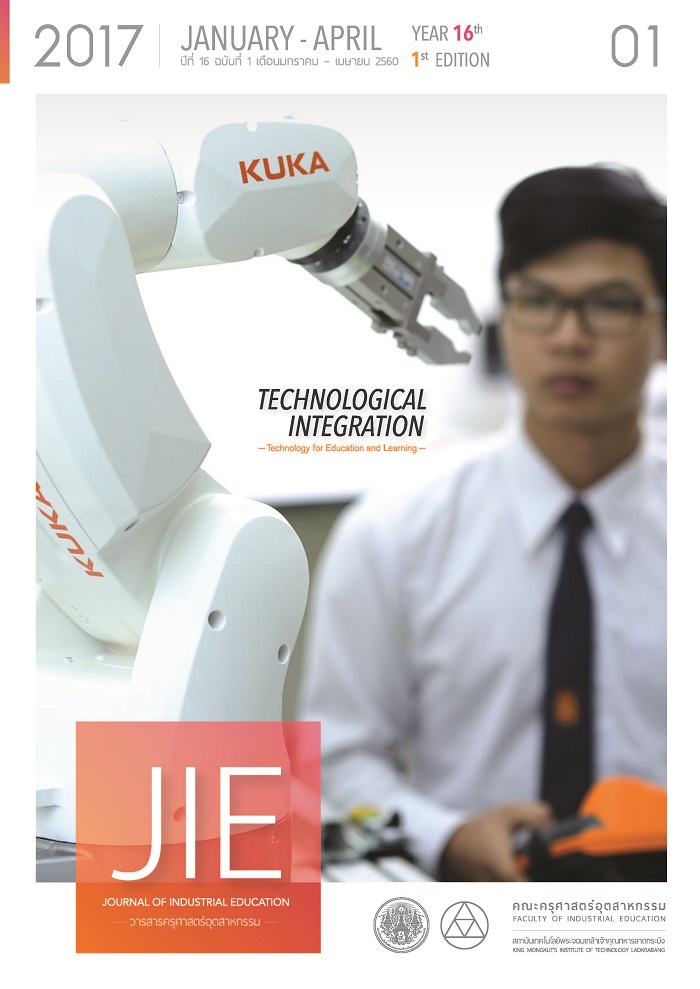THE STUDY OF WASTE RECYCLING PROCESS IN CERAMIC INDUSTRY FOR DESIGNED OF COMMUNITY PRODUCTS
Keywords:
Composite materials, Ceramic Composite materials, Ceramic waste, Coconut fibers and Coconut husk, Cement paste, Physical properties, Mechanical propertiesAbstract
This study was aimed to 1) examine a utilization process of ceramic industrial waste and 2) to reuse the waste and develop suitable community products. The material used in this study was fired ceramic tile waste is currently of a large volume in ceramic industry. The waste was empirically applied in a variety of utilization processes based on materials engineering theories for mixed or composite materials, or generally called ceramic composite. The results of this study shaded light on the reuse of ceramic waste by using Portland cement type 1 as a binder. A total of 5 application formulae were obtained and Type 3 with formula PCS7 was considered high-quality as it showed good mechanical properties and other interesting physical characteristics which were adequate in the design and production of community product. Formula 3 was a mixture of 11.65 micron ceramic waste and Portland cement at the ratio of 70:30 with 15% added water. The mixture particularly formed a porous ceramic material with good mechanical. The material generally satisfied the Industrial Product Standards with the compressive strength of 57.61 Mega Pascal and cost 0.66 Thai baht per one kilogram production. The study of community product development showed that PCS7 was highly appropriate in the production of interlocking concrete flooring tile. In addition, Quality Function Deployment techniques were applied to ascertain solutions for possible product problems. In conclusion, fired ceramic scrap from ceramic industry can be reused in the production of Type 3 product by using Formula 3 which formed a porosity and high resistance ceramic composite material with unique color, texture, surface and other particular physical characteristics suitable for the development of high quality community products.
References
[2] The Center of Excellence for Environmental and Hazardous Waste Management (EHWM). 2012. Accounts of Waste as a source Renewable Resources. Bangkok: Chulalongkorn University.
[3] Industrial Waste Management Bureau, Department of Industrial Works. 2012. Manual with 3Rs of Waste Management Factory within Years Two. Bangkok: Department of Industrial Works.
[4] Department of Industrial Works. 2015. Waste Management Industry. Bangkok: Ministry of Industry.
[5] Industrial Waste Management Bureau, Department of Industrial Works. 2013. The Rules Properties of Waste Suitable for Utilization an Industrial Scale. Bangkok: Ministry of Industry.
[6] Wangniwetkul, K. 2015. Engineering Materials. Bangkok: Print fatory Rungsaengkanpim.
[7] Pimkhaokham, P. 2004. Ceramics. 5th ed. Bangkok: Chulalongkorn University.
[8] Thiamsorn, W. 2012. Ceramics for Construction and Ceramic for Techniques. Bangkok: Odeon Store.
[9] Thai Industrial Standards Institute (TISI). 2000. Standard for Concrete Aggregates. Bangkok: Ministry of Industry.
[10] Buasri, K. 2011. Development Tile Roof Cement Board Mixes Coconut Fibers and Bagasse Fibers. Kanchanaburi: Polytechnic Kanchanaburi.
[11] Lertwattanaruk, P. 2012. Properties of Natural Fiber Cement Materials Containing Coconut Coir and Oil Palm Fibers for Manufacture of Building Materials. Pathum Thani: Thammasat University.
[12] Sujarid, C. 1997. Construction Materials for Architecture. Bangkok: Chulalongkorn University Book Center. [13] Nanchai, B., Louhapensang, C. & Saribut, U. 2015. Study and Development from local wisdom of baan Tawai village Chiang Mai. Journal of Industrial Education, 14(1), p.116-120.
Downloads
Published
How to Cite
Issue
Section
License
"The opinions and contents including the words in papers are responsibility by the authors."
"ข้อคิดเห็น เนื้อหา รวมทั้งการใช้ภาษาในบทความถือเป็นความรับผิดชอบของผู้เขียน"



